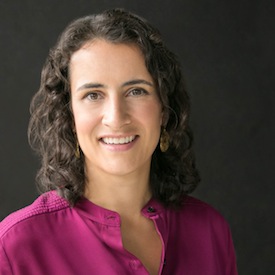East Side Jews observes Shabbat at Trout Lake. (photo from Carey Brown)
When Rabbi Carey Brown and her family moved to Vancouver in 2011, they made their home in East Vancouver.
“We settled down in East Van and really loved the neighborhood,” Brown told the Independent. “Slowly, as I became familiar with more people, I realized there was a growing need for additional places for people to meet and connect with their roots.”

This realization was the inspiration for East Side Jews, a group that Brown founded about a year ago, and which she co-directs with Lisa Pozin. Brown is associate rabbi at Temple Sholom, and Pozin is the synagogue’s program director.
“We started with Rosh Hashana on Main Street, we invited people to join us and taste honey cake and hear a story at Solly’s, learn about honey at the Honey Shoppe, and sing songs and hear the shofar at a local park. We didn’t know how to reach people, so we posted notes in coffee shops and community centres around the area. To our surprise, the turnout was amazing. We decided to create one event every month. We hosted a tikkun olam event at the PriceSmart food store [now a Save-On] on King Edward Avenue and Knight Street, we did a Havdala under the stars at Trout Lake, and shared Shabbat dinners in local community centres. People really liked our events, a group was formed. We were really happy and excited.”
Elaborating on the tikkun olam event, Brown said it was a “scavenger hunt we called Project Feed. We gave the families a list of specific food items that JFSA [Jewish Family Services Agency] told us were needed by the Jewish Food Bank and PriceSmart told us would be on sale. The families made a donation to participate and then used their lists to fill their carts. After finishing the shopping, we met at Or Shalom to sort the food and hear a short presentation from JFSA about the food bank. People learned a lot about the food bank and realities of hunger in our community. The kids were very into the experience and the parents really appreciated having a hands-on opportunity to engage with their kids in tikkun olam.”
Brown grew up in Minneapolis, went to Northwestern University, which is near Chicago, and then studied at Hebrew Union College in Jerusalem and in New York City. After her ordination, she was a rabbi at Temple Isaiah in Lexington, Mass., for six years. That community’s approach to community outreach influenced her and, when she and her husband – Dr. Gregg Gardiner, assistant professor and Diamond Chair in Jewish Law and Ethics at the University of British Columbia – brought their family (they now have two children) to Vancouver, she incorporated it into her own approach.
“The federation in Boston (CJP, Combined Jewish Philanthropy) invested a lot of time and effort in reaching out to interfaith couples. Every event, every meeting, every holiday, they always emphasize the fact that the invitation is open to interfaith couples, that they are welcome to join in, that it will be in a nonjudgmental atmosphere, that everyone will accept them and encourage them to connect to the Jewish community. I saw how meaningful that was to families and that it really impacted their participation in Jewish life. I wanted to make sure that families in Vancouver were hearing this supportive message as well.”
And it seems that the message is indeed being heard – and appreciated. East Side Jews now has some 200 names on its mailing list, it receives support from the Jewish Federation of Greater Vancouver and has recently been honored by the Union for Reform Judaism. The East Side Jews initiative garnered Temple Sholom one of URJ’s 2015 Belin Outreach and Membership Awards, which recognizes congregations from across North America “that have developed programs to actively welcome and integrate those new to Judaism, created relationship-based membership engagement models, or developed new, innovative ways to engage and retain members.”
“We really try to use the events to establish personal relationships with our new friends, to go for a coffee, to meet in smaller groups, to build a connection following the public events,” explained Brown about what makes East Side Jews unique. “We learned that there are many people out there who are eager to live a meaningful Jewish life, but they are having a hard time finding the right place for them. We create a Jewish experience that is very approachable, very friendly and accepting. There are many Jews who grow up here and they have a very small connection to the community. They would love to have more, but they don’t know where or when or how. We help these kinds of people get engaged and involved and find their own path to design their own Jewish life…. It’s working very well so far and our group is growing at a surprising pace.”
Next on East Side Jews’ calendar is a field trip to Fraser Common Farm/Glorious Organics in Aldergrove on the morning of Sept. 27 with Temple Sholom congregants, religious school kids and others. If you would like to catch the 9:10 a.m. bus from Temple Sholom, register at [email protected] or 604-266-7190. For more information, visit templesholom.ca/sukkot-on-the-farm.
For anyone wanting to know more about East Side Jews, visit eastsidejews.ca.
Shahar Ben Halevi is a writer and filmmaker living in Vancouver.

